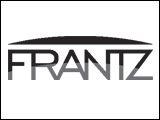A veterinarian with the Canadian Food Inspection Agency says Canadian livestock producers and transporters share the CFIA’s commitment to the humane transport of animals.
As part of the 2016 Manitoba Swine Seminar earlier this month in Winnipeg the topic “Humane Transport: What You Need to Know” was among the topics discussed.
Dr. Max Popp, an Animal Health District Veterinarian with the Canadian Food Inspection Agency, says industry is responsible for complying with the regulations established to ensure humane conditions for animal welfare during transportation.
The Food Inspection Agency has the authority for humane transportation of animals under the Health of Animals Act and it’s all listed in its regulations. In those regulations is a definition of the conditions for humane transport of livestock in all modes of transport. The regulations forbid overcrowding of animals. For example transporting animals that are unfit is prohibited, loading, transporting or unloading animals in a way that causes injury or suffering is prohibited or is the goal of being avoided.
CFIA works with industry to make livestock transporters aware that vehicles used in the transfer and delivery of animals must be suitable and proper techniques are used in the loading, unloading and transferring of all animals. There’s more details on the federal website at www.inspection.gc.ca.
Most Canadian producers and transporters share our commitment to animal protection and adhere to all these regulations. If they’re looking for additional guidance, it’s provided through the CFIA’s compromised animal policy which is available to all livestock transporters. Again they can find this on the CFIA website.
Dr. Popp advises producers to review the regulations and where there are questions to consult with a veterinarian.
He notes industry is engaged in ensuring the humane transport of animals and, when presentations are done by the CFIA, the information is well received.



